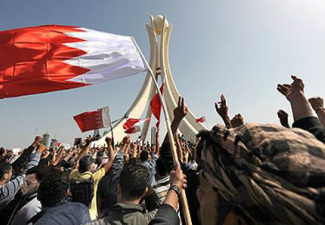 Shi'a and Sunni Muslims lead a protest for democracy in Bahrain Shi'a and Sunni Muslims lead a protest for democracy in Bahrain _Tags: globalization, media, nationalism, religion, social mvmts/social change/resistance, violence, war/military, arab spring, bahraini uprising, moral resources, organizational resources, pearls revolution, propaganda, social revolution, 21 to 60 mins Year: 2011 Length: 50:56 Access: YouTube Summary: [Trigger warning: there are graphic scenes of violence throughout this clip. Two scenes are especially noteworthy. At the 7:38 mark, there is footage of protesters being shot by the Bahraini Army, and at the 8:30 mark a man is shown bleeding in a hospital bed after he was reportedly shot in the head.] This documentary from Al Jazeera English recounts the fight for democracy among Shi'a and Sunni Muslims in Bahrain. An island kingdom on the western shore of the Persian Gulf, Bahrain is formally ruled by the Al Khalifa family as a constitutional monarchy. The film chronicles the early moments of the spread of the Arab Spring to Bahrain where protestors converged on Pearl Roundabout, which lies in the financial district at the heart of Manama. Chief among their demands was for the emergence of a secular democratic government, and more pointedly, protesters called for the majority Shi'a Muslims to be included in the formal political system, which was dominated by a Sunni family. The documentary begins on February 16, 2011, the first day protesters occupied the roundabout. It documents the collaboration between the nations of the Arabian Peninsula under the auspices of the Gulf Cooperation Council (GCC) to stop the spread of these revolutionary protests, and Al Jazeera offers exclusive footage from inside both the opposition encampment at Pearl Roundabout and Salmaniyya Hospital, which was not only a place to treat the injured but also initially a place of refuge from state violence. The documentary works well as a means of introducing students to the study of social movements. Among other concepts, the film is useful for exploring the evolution and consequences of state tactics aimed at quelling the protests—both violent and non-violent. Analysts of social movements often point to the significance of a nascent movement's moral and organizational resources, and this film illustrates the importance of both. For example, one can easily use the film to engage students in a discussion about the significance of Pearl Roundabout and Salmaniyya Hospital as practical locations for organizing protests and disseminating information (i.e., organizational resources). At the same time, one could also lead a discussion about how these were effective sites for protesters to imbue their struggle with meaning and legitimacy (i.e., moral resources). Submitted By: Lester Andrist
3 Comments
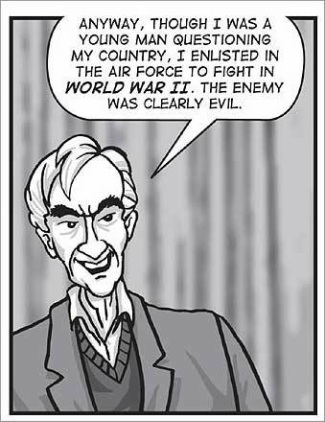 Viggo Mortensen reads Howard Zinn Viggo Mortensen reads Howard Zinn Tags: education, government/the state, historical sociology, knowledge, nationalism, political economy, war/military, activism, empire, howard zinn, imperialism, sociological imagination, subtitles/CC, 06 to 10 mins Year: 2008 Length: 8:35 Access: YouTube Summary: This video portrays Howard Zinn's essay "Empire or Humanity?: What the classroom didn’t teach me about the American empire" as narrated by the actor Viggo Mortensen (original essay and teaching materials posted here). It traces Zinn's own development of his sociological imagination, his miseducation in public schools, and his critique of US foreign policy. This video is good for introducing the concept of the sociological imagination, the connecting of private troubles to public issues (CW Mills), and thinking critically about issues of power, empire, and imperialism. It may be useful during an introductory lecture in lower level sociology classes (particularly Intro to Sociology, Social Problems, or Contemporary Theory). It can be used as an ice-breaker for beginning to talk about the sociological imagination as a way of seeing by looking for patterns, thinking critically, and connecting one's "private troubles" to "public issues." Submitted By: Dave Paul Strohecker (@dpsFTW) 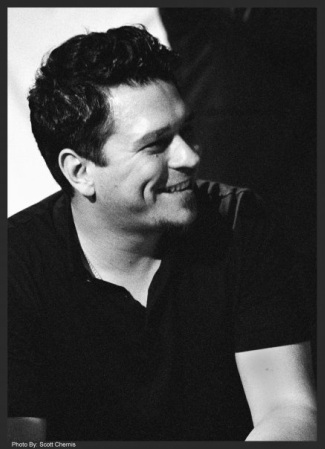 Paul Flores Tags: art/music, immigration/citizenship, nationalism, social construction, race/ethnicity, theory, war/military, culture, latino/a, poetry, racism, stuart hall, symbolic interaction, subtitles/CC, 00 to 05 mins Year: 2010 Length: 2:18 Access: YouTube Summary: I first started using Paul Flores' spoken word poem with adult intermediate English language learners as an example of an activity called "list poems," where students explore different ways of expressing descriptions with one adjective (here, "brown"). The students write their own list poems, we share them, and then we talk about how meaning is social—how the context in which the descriptor is used, the social interaction itself, and the ways the participants interpret both the words and the interaction, shape the meanings made of the words. In teaching sociology, I would place this activity in a discussion of social theory—perhaps in a discussion of social constructionism, symbolic interaction, or cultural studies. Stuart Hall, for example, describes the making and sharing of meaning as a social process. It is possible to see the social process of meaning-making here in the different feelings one might get from the poem when reading it silently as compared to watching it performed, or when reading/viewing it alone as compared to reading/ viewing it with others. The poem can be read at www.marcusshelby.com. Submitted By: Margaret Austin Smith  sociologist Sam Richards sets an extraordinary challenge sociologist Sam Richards sets an extraordinary challenge Tags: nationalism, political economy, violence, war/military, c. w. mills, empathy, ethnocentrism, military sociology, sociological imagination, sociology of war, terrorism, 11 to 20 mins Year: 2011 Length: 18:07 Access: TED Talks Summary: By leading Americans in his audience step by step through a thought experiment, sociologist Sam Richards sets an extraordinary challenge: can Americans understand—not necessarily condone, but understand—the motivations of an Iraqi insurgent? I would argue that Richards' thought experiment is an attempt to give his audience a taste of what C. W. Mills called the sociological imagination, which can be defined as a perspective that allows one to locate the structural transformations that lie behind one's personal troubles. By proposing an alternate history for the United States, one where a colonial China extracts coal from the US in order to power Chinese cities, Richards asks his audience to consider a political economy that would trap the vast majority of Americans in desperate poverty. Just as Americans can imagine the intense frustration they would feel if forced to suffer under such an unbalanced economic arrangement, perhaps they can similarly imagine the intense frustration many Iraqis currently feel. Richards' thought experiment asks Americans to locate those Iraqis who have been demonized by the West as simply evildoers or terrorists in a broader social context, and to use a sociological imagination in order to grasp the motivations and frustrations of those who take up arms against the US. John Dower has argued that the war in the Pacific was a war without mercy in part because the Japanese became so dehumanized and alien, so unworthy of empathy, that the usual rules of conduct in war were set aside. If this is true, then a sociological imagination, as a means of fostering empathy, has important implications for conduct in war. Submitted By: Anonymous 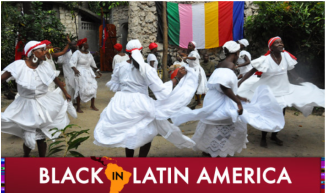 Henry Louis Gates, Jr. explores issues of race and identity in Haiti Henry Louis Gates, Jr. explores issues of race and identity in Haiti Tags: government/the state, historical sociology, inequality, knowledge, nationalism, political economy, race/ethnicity, religion, social construction, social mvmts/social change/resistance, theory, war/military, benedict anderson, edward said, 21 to 60 mins Year: 2011 Length: 51:25 Access: PBS Video Summary: Part of the PBS series "Black in Latin America," this short film featuring Professor Henry Louis Gates, Jr. explores issues of race and identity in Haiti and the Dominican Republic, two countries that share the same island of Hispaniola, yet share little else in terms of language, economic opportunities, relations with colonial nations, and identification with African ancestry and heritage. This clip is excellent for illustrating how racial classifications are a social construction, as meanings of blackness shift across the two countries. The island's history of race relations also demonstrate how, as Edward Said shows, race is constructed in reference to a racial (and national) "other," as Dominicans have historically understood themselves as "not Haitian" and therefore "not black." Students can see how knowledge about national racial identity has been deliberately cultivated by national elites in the Dominican Republic through selectively told histories, national memorials, holidays, and monuments. This racially motivated nation-building effort articulates well with Benedict Anderson's work on imagined communities. Finally, the video chronicles how Haiti became the first-ever black republic, and the pivotal role that religion played in the slaves' fight for liberation. However, ever since winning independence, outside nations, including the United States, have imposed policies that have made it near impossible for Haitians to develop a robust economy and political infrastructure, evidenced today by the poverty and political corruption that plague the country, but which is always challenged by Haitians' rich and complex belief system and artistic culture. The video is divided into six chapters, allowing instructors to easily screen shorter segments of the film if they wish. I would like to thank Jean François Edouard for suggesting this clip. Submitted By: Valerie Chepp 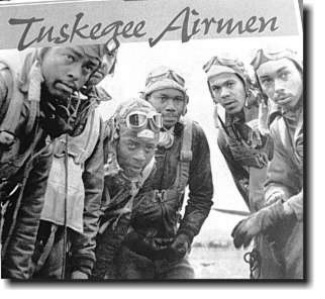 Tags: du bois, inequality, nationalism, prejudice/discrimination, race/ethnicity, theory, double consciousness, the veil, subtitles/CC, 00 to 05 mins Year: 1995 Length: 4:53 Access: YouTube Summary: The Tuskegee Airmen were the first African-Americans to fly in the US armed forces, but were subjected to Jim Crow laws and institutional discrimination. In this clip from a fictional film about the Tuskegee Airmen, Lt. Col. Benjamin O. Davis (Andre Baugher) defends his squadron, which was treated very different than white squadrons of the time. He argues that his "colored pilots" have "carried not only the burden of their dreams of becoming American military aviators but the hopes of an entire people." This is an excellent illustration of Du Bois' concepts of the veil and double consciousness. Looking at his white military superiors through the veil, Davis asks "how do I feel about my country ... and how does my country feel about me?" The veil not only refers to their skin color and seeing themselves through the eyes of others but also features a dimension of citizenship where some do not see Blacks as “true” Americans (i.e. full US citizens), which is forcefully depicted by the Airmen's treatment in the military and their denial of full rights. Similarly, double consciousness refers to a self-awareness of being not only an “American” but also an “African-American.” Through Lt. Davis' account of his squadron, it is clear that the the pilots were fully aware of themselves as proud Americans serving their country, but with a simultaneous awareness of being treated differently as African-Americans. In addition to asking students how this clip illustrates these concepts, it can also be a useful video for exploring race and nationalism. Submitted By: Paul Dean 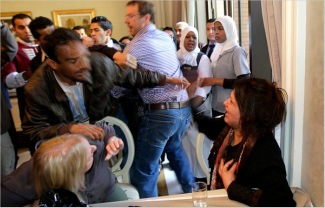 Jerome Delay / Associated Press Tags: gender, nationalism, violence, war/military, rape, rape camp, war rape, 00 to 05 mins Year: 2011 Length: 1:05 Access: New York Times Summary: This news footage is of a Libyan woman, Eman al-Obeidy, who recently entered a Tripoli hotel full of foreign journalists. Although not shown in the video, al-Obeidy claimed to have been detained at a checkpoint in the Libyan capital by forces loyal to Muammar el-Qaddafi and some time thereafter raped by 15 men. She reportedly showed the journalists at the hotel a number of bruises and scars and mentioned that her friends were still being detained by militiamen. David Kirkpatrick of the New York Times quotes the woman as saying, “I was tied up, and they defecated and urinated on me. They violated my honor.” Soon thereafter plain-clothed government minders entered the hotel, and with some assistance from the hotel's servers and in the face of protests from many onlookers, forcibly put al-Obeidy into a car and drove away. Her whereabouts and well being are currently unknown. The raw footage of this woman being physically removed is heart wrenching, and it certainly grabs the viewer's attention. Perhaps this is because the coercion is so plain to see, but the clip is also engaging because we know it is not archival footage from a settled conflict, but is instead taken from a developing civil war in Libya. Instructors can use this clip as a means of catalyzing a discussion about war rape, which is used systematically as a means of humiliating the enemy and destroying communities. Students can also be reminded that rape is not only something the soldiers of "Other" nations do. Another clip on The Sociological Cinema (here) features testimonies, which describe rape committed by American soldiers during the Vietnam War. Submitted By: Lester Andrist 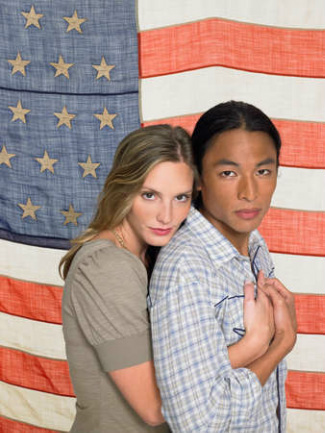 Multi-racial and multi-ethnic identities are on the rise Tags: children/youth, community, demography/population, immigration/citizenship, marriage/family, multiculturalism, nationalism, race/ethnicity, social construction, 00 to 05 mins Year: 2011 Length: 5:16 Access: New York Times Summary: This video accompanies a New York Times article about mixed race students on college campuses in America. Profiling students at the University of Maryland, young adults speak out about multi-racial and multi-ethnic identities, relationships, and "racial distinctions of behavior" (as one student puts it). Driven by increasing immigration and interracial marriages, young people today represent a significant and unprecedented demographic shift in the United States. Students respond to this changing environment by raising awareness about multi-racial and multi-ethnic issues and creating a safe space for a multi-cultural community on college campuses. This clip would be useful for initiating class discussions around racial and ethnic identities, social constructions of race, as well as a critical conversation around racial and ethnic behaviors, interactions and performances (stemming from the student's remark about "racial distinctions of behavior"). Finally, students can use the clip to contemplate the future of race and ethnicity in America, and the potential for change. Do students think racism will disappear as America becomes increasingly multi-racial and multi-ethnic? Submitted By: Valerie Chepp 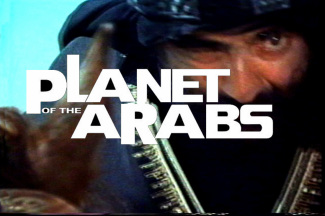 Tags: discourse/language, gender, media, nationalism, race/ethnicity, social construction, culture, masculinity, orientalism, othering, representation, 06 to 10 mins Year: 2006 Length: 9:01 Access: YouTube Summary: The caption below this trailer-esque, YouTube montage by Jaqueline Salloum describes it as exposing "Hollywood's relentless vilification and dehumanization of Arabs and Muslims." Much like the Avatar video remix, also posted on The Sociological Cinema, "Planet of the Arabs" works as a media literacy tool for deconstructing how the Arab or Muslim Other is portrayed in mainstream media. The clip draws footage from varied sources, ranging from James Cameron's action-packed "True Lies" to an episode of Jim Henson's playful creation, "The Muppet Show." The clip demonstrates that Arabs and Muslims are consistently depicted as religious fanatics, perpetual terrorists, backwards, and irredeemably tribal. While Instructors can certainly ask students to articulate these representations, they can also press students to contemplate how these depictions of Arabs and Muslims help construct an American national identity. At about 2 minutes, the remixed clip echoes the idea that "they are attacking our way of life." In other words, the media consistently propagates the idea that the Muslim or Arab terrorist is not only a threat to life, but also Western civilization. Taking the analysis a bit further, students can be asked to consider how these depictions of Arabs and Muslims are simultaneously about constructing not only an American identity, but an American masculine identity. In several places, one sees how an American masculinity, characterized by stoicism and poise, is set in direct contrast to an irrational, Islamic fanatic or an incompetent Arab buffoon. As Salloum suggests, the clip might work well with Jack Shaheen's book, Reel Bad Arabs, which reviews the Arab and Muslim stereotypes in 900 films and was researched over a period of 20 years. The clip would also work well in tandem with Edward Said's landmark book, Orientalism. Submitted By: Lester Andrist 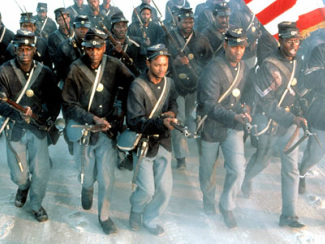 Scene from the motion picture Glory Scene from the motion picture Glory Tags: historical sociology, nationalism, race/ethnicity, war/military, 21 to 60 mins Year: 1989 Length: 27:38 Access: clip 1; clip 2 Summary: I find that when teaching nationalism, it is sometimes necessary to begin by making a case for why nationalism is an important phenomenon for sociologists to study. There is a tendency among my students to regard the nation and its nationalism as timeless and therefore unremarkable, but the power of nationalism is due in large measure to its ability to evade scrutiny. To make my case, I begin by showing a short clip from the 1989 movie "Glory," which stars Matthew Broderick and Denzel Washington. The movie tells the story of the 54th Massachusetts Volunteer Infantry during the American Civil War, one of the first units to be made up entirely of African Americans. The clip I show is of the film's climactic scene, which depicts the 54th's perilous assault on Fort Wagner. An inspirational score plays in the background and is only broken by the percussion of cannon fire as the soldiers bravely march on the fort. The odds, however, were stacked against the 54th and we learn in the epilogue of the film that they never succeeded in taking the fort. Following the clip, I encourage students to contemplate their own nationalism and the fact that the filmmakers counted on it when depicting the assault on Fort Wagner as the emotional climax of the film. Using the clip, one can further draw students into a discussion about the way nationalism intersects with race, as when a nation is imagined along racial lines or even when soldiers set aside racial differences for the greater purpose of a nationalist struggle. While the sociological concepts in the clip may need to be spelled out for students by a well prepared instructor, the emotional tone of the clip is excellent for making otherwise disengaged students sit up and join the discussion. Submitted By: Lester Andrist |
Tags
All
.
Got any videos?
Are you finding useful videos for your classes? Do you have good videos you use in your own classes? Please consider submitting your videos here and helping us build our database!
|
 RSS Feed
RSS Feed
